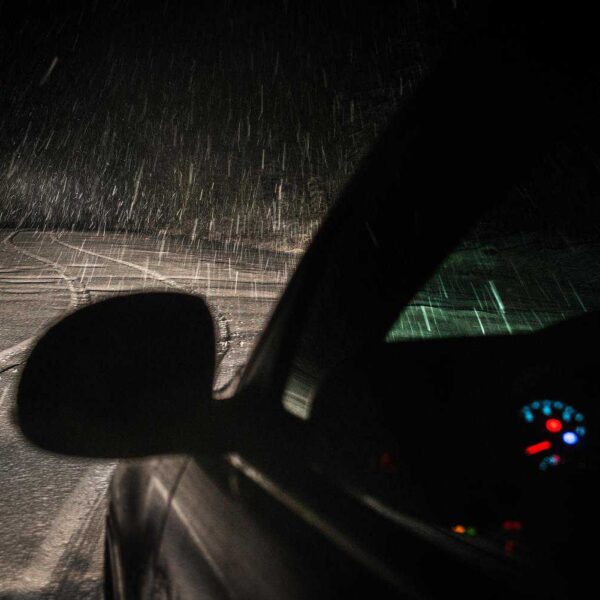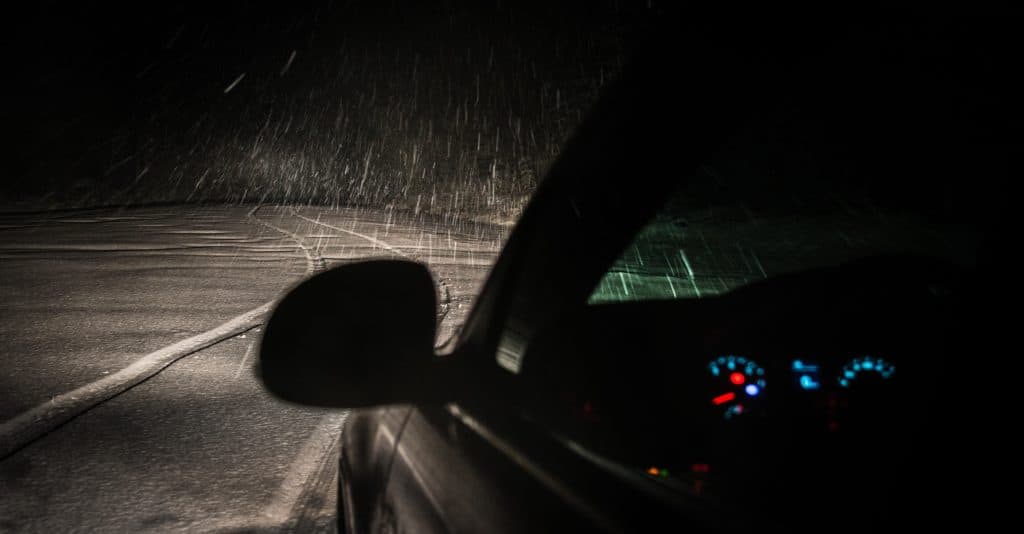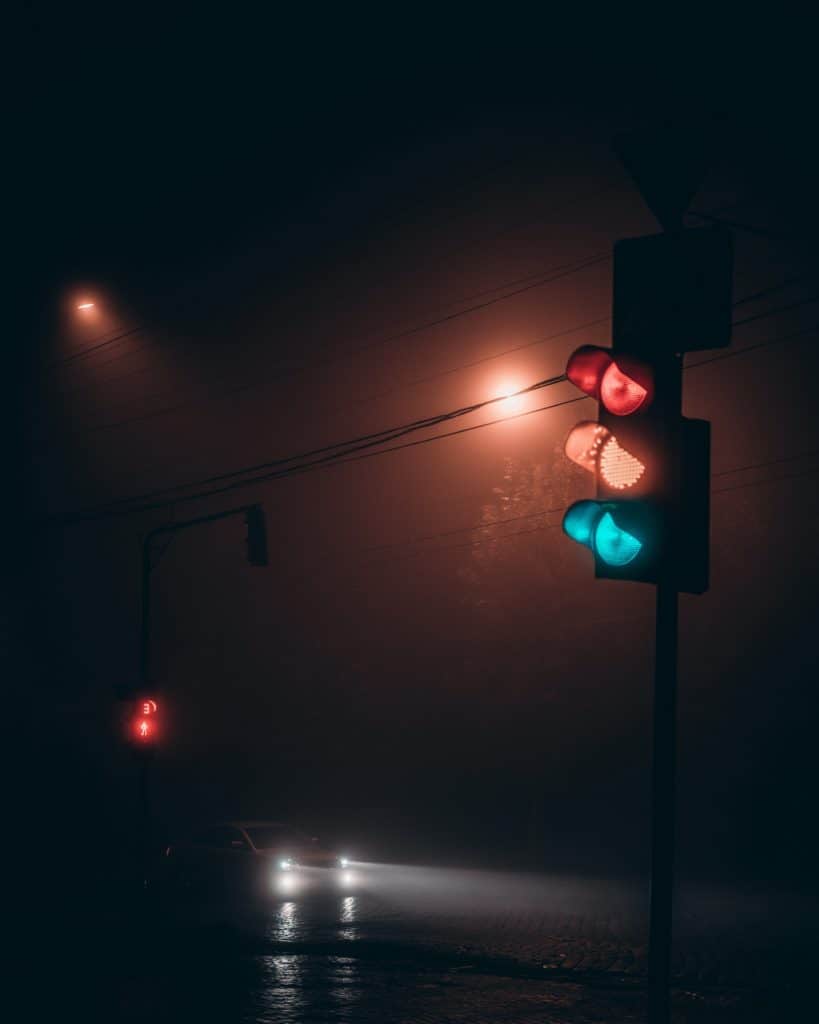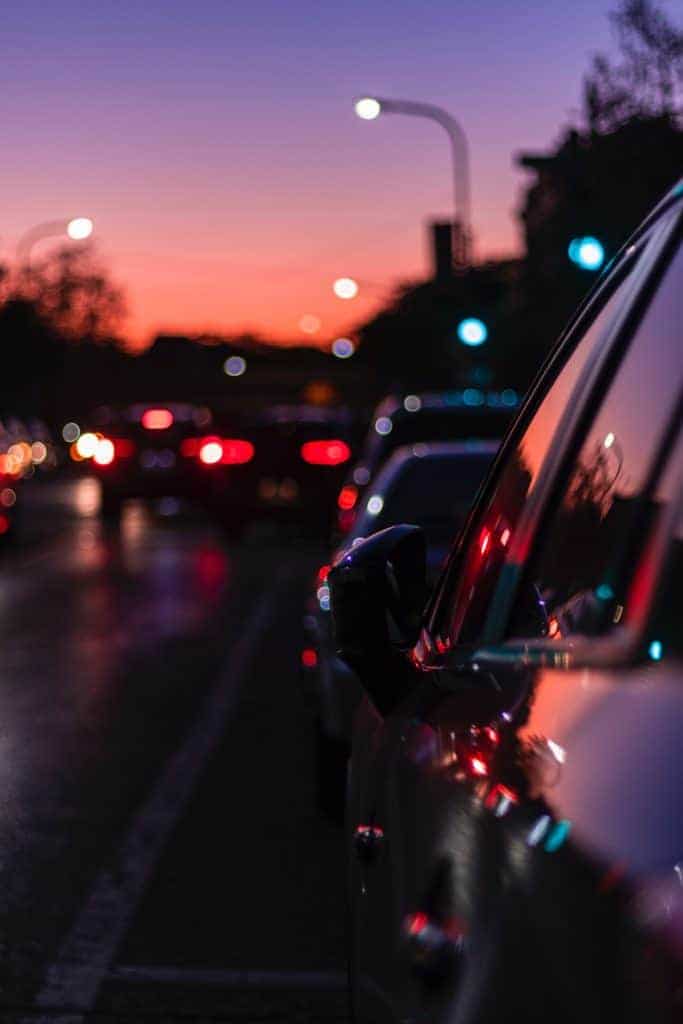
Driving at Night
January 28, 2022

Until we start getting more daylight soon, we can still count on it getting dark during the evening commute in the winter. Driving at night is something that becomes difficult for nearly everyone at some point. The glare and decreased visibility are bothersome enough for some drivers to completely stop driving at night. Here are the most common types of vision changes that people experience while driving at night, in addition to several ways of improving vision when driving in the dark.

TYPES OF VISION CHANGES WHILE DRIVING AT NIGHT
Decreased Clarity
Blurry central and/or peripheral vision can slow down reaction time, which can lead to the inability to see pedestrians, other vehicles, and street signs. One of the most straightforward causes of blurred vision is uncorrected refractive error. This could be any combination of nearsightedness, farsightedness, and astigmatism that requires glasses for improved vision.
Glare
Oncoming headlights, especially the very bright LED lights, can cause so much glare that it is difficult to see anything other than the white line on the right side. Unfortunately, glare tends to only get worse with age. The presence of cataracts is the most common culprit for worsening glare. When the bright light from headlights enters through the pupil, it has to go through the crystalline lens of the eye before it can reach the retina and be processed by our brain. The crystalline lens is clear when we’re born, then becomes yellow and cloudy over time, which is classified as a cataract. The cloudiness of the lens scatters the light rays and, subsequently, leads to glare.
Young people can also have problems with glare if the pupils are very large. The pupils get bigger in dark or dim environments to allow more light to enter the eyes. However, sometimes the pupils can be so large that the light rays only have limited assistance in making a straight, precise path to the retina. Similarly to cataracts, large pupils cause a light scattering effect in the eyes, which can lead to blurry distance vision, glare, and light sensitivity.

Halos or Starbursts
Traffic lights, street lights, and headlights can sometimes appear to have a starburst or halo around it. Typically when this is present, it involves an abnormality on the front surface of the eyes. Dry eyes lack a stable tear film, which can make vision fluctuate with blinking. After a long day of work on the computer or driving at night when tired, the eyes tend to be more dry and increase visual symptoms. Some individuals also experience halos after LASIK or refractive surgery. These changes are usually due to higher-order corneal aberrations that might not be correctable with glasses. LASIK can also exacerbate underlying ocular dryness as well. Lastly, it is possible that uncorrected refractive error, or the need for glasses, can be the cause of these visual symptoms.
Limited Peripheral Vision
Having adequate peripheral vision is necessary to decrease the risk of an accident involving other vehicles or pedestrians. Glaucoma is the most common condition that affects peripheral vision. Unfortunately, glaucoma usually doesn’t present any symptoms until late in the disease process when vision is greatly affected. The best way to know if you have glaucoma is through a comprehensive eye exam with the appropriate testing. Although much less common, retinitis pigmentosa is another ocular condition that causes severe peripheral vision loss.
Poor Night Vision
In general, nighttime vision gets worse with age for several reasons. The photoreceptors, or rods, needed for vision in dim environments tend to decrease in density. This can also reduce contrast sensitivity, which has a newly-discovered connection with early age-related macular degeneration. It becomes difficult to regain vision after passing oncoming headlights, similarly to entering a dark room from a bright one. Pupils also tend to get smaller with age, which decreases the amount of light that can make it to the back of the eye for vision processing. When night blindness occurs in a young person, it can be one of the initial symptoms of retinitis pigmentosa.

WAYS TO IMPROVE VISION FOR DRIVING AT NIGHT
The easiest way to improve vision when driving at night is to wear glasses if they have been prescribed to you for distance vision. Some people have glasses that they only wear when driving at night because the vision is fine during normal, daytime driving environments. An antireflective treatment on the lenses can also help reduce some of the additional glare at night, however, it will not completely eliminate symptoms for most people.
It might be time for cataract surgery if your symptoms at night are related to worsening cataracts. By removing the cataract and replacing it with a clear, intraocular lens implant that is individualized to your needs, glare and vision are greatly improved.
Treating dry eyes can help the vision and comfort of the eyes. Dryness typically gets worse towards the end of the day, especially when tired. Artificial tears are a quick and easy way to alleviate symptoms.
Safety behind the wheel is of the utmost importance, so if you do not feel comfortable driving in dim or dark lighting, please arrange alternate transportation. If you’re struggling with driving at night, call our office (717-652-7710) or schedule an appointment online to see one of our doctors. We can’t wait to see you!